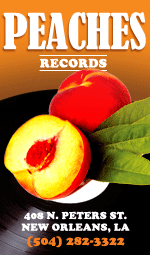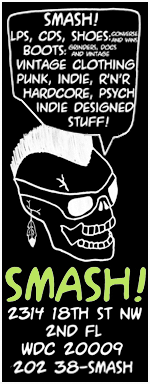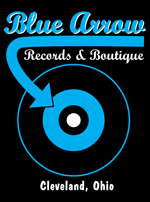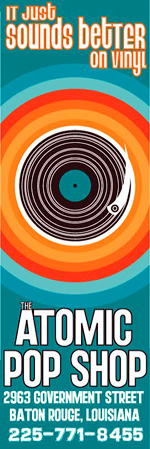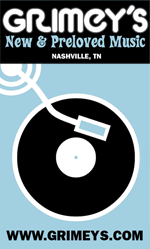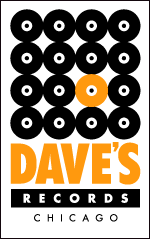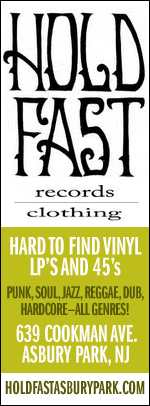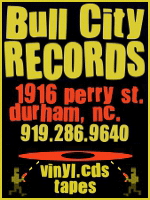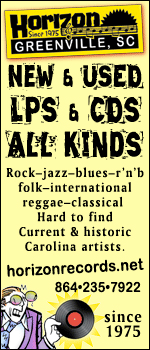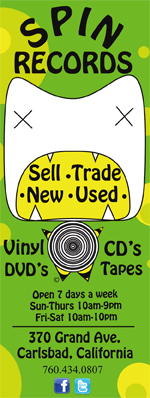
Unlike a certain religious figure I can think of, Rod “the Mod” Stewart didn’t walk on water until his third go-round. On 1971’s Every Picture Tells a Story Stewart finally got it right. He nailed down his persona (lovable rogue with lascivious cackle and sensitive side). Wrote himself a remarkable assemblage of brilliant songs (including perhaps the two best coming-of-age songs ever written and the heartfelt “Mandolin Wind”). And finally assembled THE IDEAL cast of players who found the perfect balance between rough and tumble rock ’n’ roll, folk, and soul. If Every Picture Tells a Story isn’t the perfect album, I’m D.B. Cooper.
Which isn’t to say he sank beneath the waters without a trace his first two times out. Anything but. Both 1969’s The Rod Stewart Album (which was released under the better title An Old Raincoat Won’t Ever Let You Down in the UK) and 1970’s Gasoline Alley are superb albums—gritty, soulful powerhouses packed with strong Stewart originals and imaginative covers, and boasting simpatico supporting musicians many of whom would join him on Every Picture Tells a Story.
His first two don’t get the attention afforded solo album number three, but they’re required listening. Unlike Elton John and David Bowie, Stewart (who’d honed his vocal chops with Long John Baldry’s Steampacket, the little known and short-lived Shotgun Express and the Jeff Beck Group) never took a false or indecisive step. He had his blueprint down from the very beginning—it was simply a matter of perfecting his songwriting.
And talk about double-tasking. Stewart may have the reputation as a debonair roué and two-fisted drinker (who else would put out a greatest hits album shaped like a whiskey glass?), but at least part of it must have been smoke and mirrors—he couldn’t have spent all of his time bedding the ladies and hitting the bottle, because if so where’d he find the time to put together his early solo albums (one per year, more or less) while also singing and writing songs (and immortal ones, at that) for Faces, who toured heavily and released four albums in three years in their own right? The guy worked like a bricklayer. And the lads in Faces were doing double-duty too—some or all of them appeared on his solo albums, that is until he began his sad downward slide towards mainstream mediocrity and decided he could be more mediocre without them.


 In short, Little Feat cooked. But lots of bands can cook—all you need is a frying pan and some grease. What truly separated Little Feat from the pack was its brilliant songwriting. The band bequeathed us a whole shitload of timeless songs—including “Easy to Slip,” “Willin’,” “Spanish Moon,” “Hamburger Midnight,” “Dixie Chicken,” and plenty more besides—not one of which I have ever heard played on my car radio. There is no justice in this world, boyo.
In short, Little Feat cooked. But lots of bands can cook—all you need is a frying pan and some grease. What truly separated Little Feat from the pack was its brilliant songwriting. The band bequeathed us a whole shitload of timeless songs—including “Easy to Slip,” “Willin’,” “Spanish Moon,” “Hamburger Midnight,” “Dixie Chicken,” and plenty more besides—not one of which I have ever heard played on my car radio. There is no justice in this world, boyo.
 During the early seventies the Bramletts fronted a musical family that saw them taking in lots of famous orphans, including Duane Allman, George Harrison, Rita Coolidge, Dave Mason, and King Curtis. Despite a host of studio LPs Delaney and Bonnie were best regarded as an incendiary live act, one that led Clapton to not only say, “Delaney taught me everything I know about singing,” but “For me, going on [with Blind Faith] after Delaney and Bonnie was really, really tough, because I thought they were miles better than us.” In any event his time spent with Delaney and Bonnie was a happy one for the troubled musician.
During the early seventies the Bramletts fronted a musical family that saw them taking in lots of famous orphans, including Duane Allman, George Harrison, Rita Coolidge, Dave Mason, and King Curtis. Despite a host of studio LPs Delaney and Bonnie were best regarded as an incendiary live act, one that led Clapton to not only say, “Delaney taught me everything I know about singing,” but “For me, going on [with Blind Faith] after Delaney and Bonnie was really, really tough, because I thought they were miles better than us.” In any event his time spent with Delaney and Bonnie was a happy one for the troubled musician.

 A couple of months later Procol Harum gave us their debut LP (and one of the finest albums of 1967), Procol Harum. Released by my favorite label, Regal Zonophone, Procol Harum is every bit as groovy as “A Whiter Shade of Pale,” which didn’t make it onto the U.K. release but was included on the U.S. one. Procol Harum can be divided into heavy tunes and pop lightweights but it doesn’t have a loser on it unless you include the silly “Good Captain Clack,” which the folks at Regal Zonophone had the good sense to jettison from the U.S. version in favor of “A Whiter Shade of Pale.”
A couple of months later Procol Harum gave us their debut LP (and one of the finest albums of 1967), Procol Harum. Released by my favorite label, Regal Zonophone, Procol Harum is every bit as groovy as “A Whiter Shade of Pale,” which didn’t make it onto the U.K. release but was included on the U.S. one. Procol Harum can be divided into heavy tunes and pop lightweights but it doesn’t have a loser on it unless you include the silly “Good Captain Clack,” which the folks at Regal Zonophone had the good sense to jettison from the U.S. version in favor of “A Whiter Shade of Pale.”

 Signed to Gamble & Huff’s Philadelphia International label in 1972 and featuring the mind-blowing baritone of lead singer and soul legend Teddy Pendergrass, Harold Melvin & The Blue Notes recorded masterful soul, R&B, and disco tunes that were alternately inspirational and heartrending, thanks chiefly to the band’s myriad musical talents, the stellar production of Kenny Gamble and Leon Huff, and the almost phantasmagorically powerful pipes of Pendergrass, who at his most passionate could both cause people of the female persuasion to swoon and blow the wooly off a mammoth.
Signed to Gamble & Huff’s Philadelphia International label in 1972 and featuring the mind-blowing baritone of lead singer and soul legend Teddy Pendergrass, Harold Melvin & The Blue Notes recorded masterful soul, R&B, and disco tunes that were alternately inspirational and heartrending, thanks chiefly to the band’s myriad musical talents, the stellar production of Kenny Gamble and Leon Huff, and the almost phantasmagorically powerful pipes of Pendergrass, who at his most passionate could both cause people of the female persuasion to swoon and blow the wooly off a mammoth.

 Of course, the Kinks always had their Kultists, people who lovingly cuddled their copies of 1968’s The Village Green Preservation Society the way you might your dog Blighter. As for the rest of us, we listened to our Beatles and our Stones and The Who, and the rest of England be damned. This was especially true if you were raised, the way I was, in a rural outpost of provincialism, where the Klan once marched through town and “I Wanna Hold Your Hand” was considered the pinnacle of pop sophistication.
Of course, the Kinks always had their Kultists, people who lovingly cuddled their copies of 1968’s The Village Green Preservation Society the way you might your dog Blighter. As for the rest of us, we listened to our Beatles and our Stones and The Who, and the rest of England be damned. This was especially true if you were raised, the way I was, in a rural outpost of provincialism, where the Klan once marched through town and “I Wanna Hold Your Hand” was considered the pinnacle of pop sophistication.

 How Chance’s sax stands up to that of “serious” jazz players is open to debate; while he briefly studied under the great David Murray, I think of Chance as an outlier, what with his brief tenure in Teenage Jesus and the Jerks, James Brown screams, nihilistic world view, and frequently antagonistic interactions with the very people who paid money to see him play live. These very “punk” attributes certainly separated him from the likes of his free jazz contemporaries, whose style he incorporated into his own playing. But the bottom line, when it comes to comparisons between Chance and the many other purveyors of free jazz is this: Can the guy actually play his horn, of is he just one very ballsy but amateurish poseur?
How Chance’s sax stands up to that of “serious” jazz players is open to debate; while he briefly studied under the great David Murray, I think of Chance as an outlier, what with his brief tenure in Teenage Jesus and the Jerks, James Brown screams, nihilistic world view, and frequently antagonistic interactions with the very people who paid money to see him play live. These very “punk” attributes certainly separated him from the likes of his free jazz contemporaries, whose style he incorporated into his own playing. But the bottom line, when it comes to comparisons between Chance and the many other purveyors of free jazz is this: Can the guy actually play his horn, of is he just one very ballsy but amateurish poseur?


 Seriously, friends and neighbors, who better personified the soft-rock seventies–that epoch of saccharine supremacy–than Barry Alan Pincus, aka
Seriously, friends and neighbors, who better personified the soft-rock seventies–that epoch of saccharine supremacy–than Barry Alan Pincus, aka 
 No one has ever accused Cleveland’s
No one has ever accused Cleveland’s 
 This baby was released before Slade reached full maturity and here’s how you can tell–there isn’t a single spelling error on it. And here’s another way you can tell–four of its seven cuts are covers, and the other three you probably don’t know.
This baby was released before Slade reached full maturity and here’s how you can tell–there isn’t a single spelling error on it. And here’s another way you can tell–four of its seven cuts are covers, and the other three you probably don’t know.


















